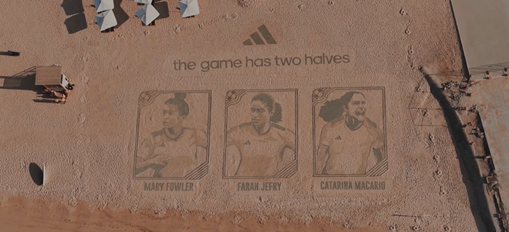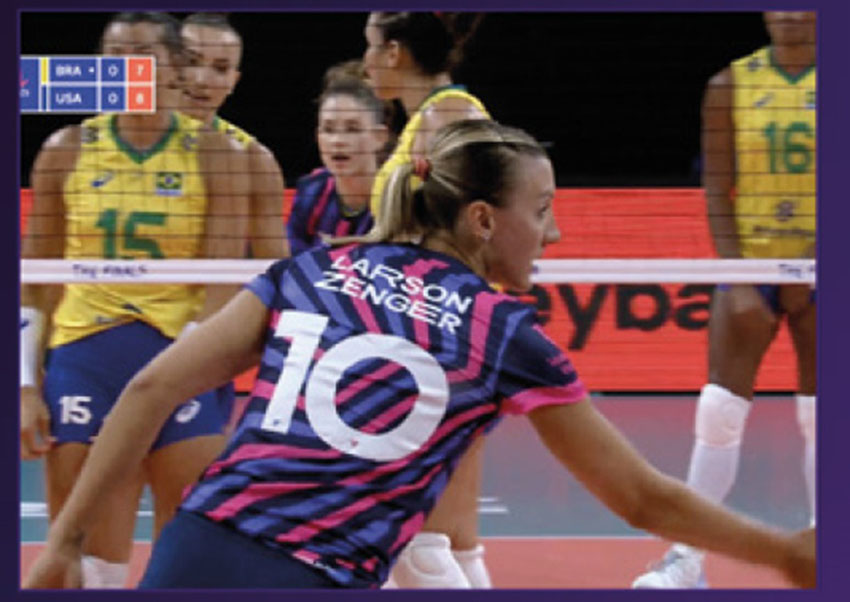For International Women’s Day, WARC’s Genevieve Silk looks into five recent campaigns that made sport more inclusive by encouraging women’s participation, promoting women’s sports and advocating for female athletes.
If there’s one thing that unites societies across the world it’s a love of sport. Be it participating or watching, sport gives meaning to the lives of people of all ages, colours and cultures – and well it should! In addition to the obvious physical benefits, it can provide a sense of community, self-reliance and resilience. There’s just one problem: in most countries around the world, women are considerably less physically active than men, with a global average of 31.7% of women being inactive vs 23.4% of men.
However, the 2020s may well be the decade when that changes for good. It kicked off with the (delayed) Tokyo Olympics in 2021, where nearly 49% of athletes were women, swiftly followed by the 2022 UEFA European Women's Football Championship and 2023 FIFA Women’s World Cup, which both saw the popularity of women’s football skyrocket. With the theme of International Women’s Day 2024 being Inspire Inclusion, this article delves into five campaigns from around the world that strove to make the still-male-dominated world of sport more gender-inclusive.
Encouraging women to participate
I’m Possible
The absence of women in sport is noticed most keenly in the Middle East where cultural norms and taboos surrounding sport and femininity have resulted in 88% of women believing that sport is not for them. To tackle this perception, sportswear brand adidas set out to bridge the gender gap in sport by making the women of Dubai into ambassadors for change with a campaign that turned the word “impossible” into “I’m Possible”.
Working with Havas Middle East, adidas invited women to share photos of themselves enthusiastically participating in sport and turned these women into the face of its campaign. Every post was transformed into a billboard, dominating the streets of Dubai with images of women unabashedly proving that sport is for them. The billboards spurred international conversation throughout the Middle East and beyond, reaching over 250 million people and gaining coverage across multiple newspapers, proving that sport can be feminine.

This Girl Can
How do you keep your campaign thriving long-term in the face of ever-declining budgets? You meet your audience where they are, not where you want them to be. This is the strategy that Sport England took with its long-term campaign This Girl Can, which inspired women and girls not only to be more physically active, but to enjoy exercise and love their bodies for what they are able to do. From the very beginning, Sport England knew that what was barring women’s entry into sport wasn’t their lack of desire to be more active, but rather a fear of judgement and constraints of time and money.
Through FCB Inferno London, This Girl Can released relatable content to assuage women’s fears of judgement and suggest ways they could stay active without sacrificing precious time and money. The eight years of the campaign demonstrated to women everywhere that everyone deserves to feel fit and sought to close the “enjoyment” gap in sport by encouraging women to make exercise social, safe, fun and self-affirming. The ongoing legacy of This Girl Can is an increase in women’s activity levels, an online community of over 800,000 women and over 2 million visitors to the This Girl Can website.

Promoting women’s sports
The Least Watched Team in the Most Watched Sport
India is home to many different faiths and some of the world’s most religious people. There’s one important religion however, that will forever be excluded from any official data: cricket, specifically men’s cricket. In the run-up to International Women’s Day 2020, dating app Bumble realised that, while plenty of brands had planned their own activations, they had all overlooked a key event: India was playing Australia in the women’s T20 Cricket World Cup finals that very day, yet only 20% of Indians intended to watch the match.
Bumble’s brand ethos has always been about empowering women to make the first move and the app leapt at the opportunity to extend the nation’s enthusiasm to women’s cricket. Its #EqualCheer campaign, by DDB Mudra Group Mumbai, called on women to ask men on a date to watch the final. Not only did the initiative reach 27 million potential fans in just 24 hours, it also improved viewership of women’s cricket threefold compared to 2018.

Equal Play
The consequences of fans being less likely to watch women’s sports are that they spend less time talking about women’s sports, and this absence in conversation is felt all the way from the living room to national media. To level the playing field, sportswear brand adidas was determined to place women’s football on fans’ minds – even as they arrived in Qatar to watch the 2022 men’s World Cup.
As part of its Equal Play campaign through FP7 McCann Dubai, adidas worked with renowned artist Nathaniel Alapide to create three giant murals in the sands of Doha Beach. The sportswear brand took to social media to ask fans which football legends they believed deserved this golden spot but none guessed the chosen footballers: Mary Fowler, Farah Jefry and Catarina Macario. When excitement was at its peak, Alapide completed the murals, ensuring that the three football legends were the biggest thing fans saw as they landed in Qatar. The stunt saw a 149% increase in online conversation and a 15% increase in positive sentiment about the Women’s World Cup.

Advocating for female athletes
Equal jersey
In comparison to football and cricket, volleyball has one of the most gender-equal fan bases, with 84% of fans following both women’s and men’s volleyball, and 61% wishing there were greater inclusivity within professional sport. The fact remains, however, that female volleyball athletes are more likely to receive lower salaries, attract fewer sponsors, be offered inferior contracts and receive far less media attention. In an effort to close this gap, governing body Volleyball World launched its global Equal Jersey campaign through Ogilvy Social Lab Amsterdam.
Worn by the world’s top volleyball players, the jerseys featured not only the player’s name and number, but also the name of the player of the opposite sex with the same jersey number. The players wore Volleyball Global’s unique jerseys in a globally televised championship finale, reaching 3.3 billion people and sparking a 1,230% increase in online conversation surrounding sport and gender equality.

The importance of inclusivity
It’s safe to say that when asked to think of an athlete, most people still picture a man. But does that mean that women should make their peace with forever being an afterthought in the world of sport? Absolutely not! Gender-inclusivity in sport means encouraging more women and girls to be physically active, promoting women’s sports as equal to men’s and advocating for female athletes to have the same salaries and opportunities as their male counterparts.
Somewhere out there, a little girl still believes that only boys can be footballers. Let’s change her mind!

